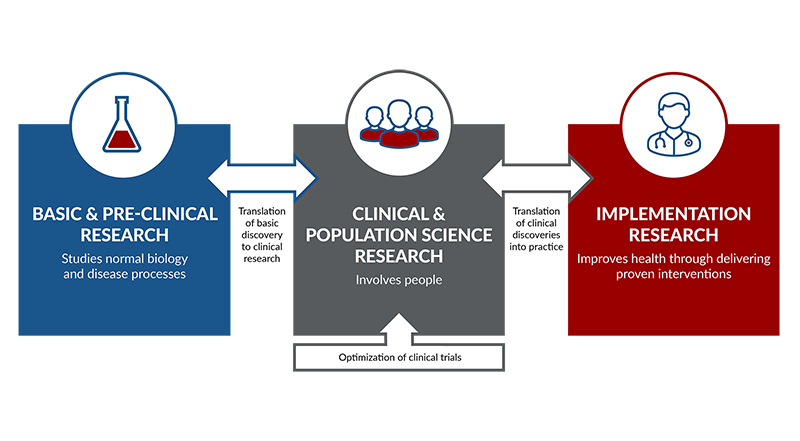Introduction
Many healthcare professionals are looking for new ways to grow their careers, explore different roles, or find better work-life balance. One increasingly popular path is transitioning from healthcare to clinical research. This shift offers exciting opportunities, including less physically demanding work, more regular hours, and the chance to contribute to medical advancements behind the scenes.
If you’re a nurse, lab tech, pharmacist, or doctor wondering how to make the switch, this step-by-step guide will show you how. From understanding the basics to getting the right training, we’ll walk you through each part of the journey.
Are you a healthcare professional seeking a new career path that still allows you to impact patient care, but in a more dynamic, research-focused environment? Transforming into the field of clinical research could be the next big step in your professional journey.
If you’re ready to make the shift, enrolling in an Accelerator Course for Clinical Research Careers is a smart first move. It equips you with industry-relevant knowledge, terminology, and skills that bridge the gap between clinical care and clinical trials.
Here’s your step-by-step guide to successfully moving from healthcare into clinical research:
Step 1: Understand What Clinical Research Involves
Before entering any new field, it’s essential to understand what you’re getting into.
Clinical research focuses on studying new medical treatments, devices, or interventions to determine their safety and effectiveness. These studies, known as clinical trials, are regulated and structured to ensure high ethical standards and patient safety.
Key roles in clinical research include:
- Clinical Research Coordinator (CRC): Manages day-to-day trial operations at a research site.
- Clinical Research Associate (CRA): Monitors during the trial at various sites to ensure protocol compliance.
- Regulatory Specialist, Data Manager, Medical Writer, and more.
If you already have experience in patient care, documentation, or protocol adherence, you’re closer than you think.
Step 2: Identify Transferable Skills
Many skills you use in healthcare are directly applicable to clinical research. Recognizing them is key to tailoring your resume and training path.
Transferable skills include:
- Patient interaction and informed consent
- Medical documentation and attention to detail
- Time management and multitasking
- Ethical decision-making
- Familiarity with medical terminology and procedures
- Knowledge of HIPAA and patient safety regulations
By framing your clinical experience in terms of these competencies, you’ll be better positioned to shift into a research setting.
Step 3: Get Certified or Trained
This is a significant step that gives you a competitive edge. While you may have the clinical background, research requires specific knowledge in areas like:
- Good Clinical Practice (GCP)
- Clinical trial phases
- Protocols and informed consent procedures
- Regulatory documentation (e.g., IRB submissions)
- Trial data collection and reporting
That’s where an Accelerator Course for Clinical Research Careers comes in. These fast-track programs are designed for professionals like you who want to transition efficiently. They teach you the core essentials, often including GCP certification, resume prep, and interview readiness all tailored for healthcare-to-research transitions.
Step 4: Tailor Your Resume and LinkedIn Profile
Once you have training and a better understanding of clinical research, it’s time to reframe your professional identity.
Here’s how to revise your resume:
- Create a summary that mentions your healthcare background and new focus on clinical research.
- Highlight transferable skills aligned with CRC or CRA roles.
- Include relevant coursework, certifications, or internships.
- Use industry terms: “GCP-compliant documentation,” “patient enrollment,” “protocol adherence,” etc.
Update your LinkedIn profile accordingly and start following clinical research organizations, recruiters, and professional groups.
Step 5: Gain Practical Exposure
Even a short-term internship, volunteer position, or shadowing opportunity can boost your confidence and credibility. Some training programs offer clinical research simulations or externships to help you gain hands-on experience.
You can also explore entry-level positions such as:
- Clinical Trial Assistant (CTA)
- Research Assistant
- Regulatory Affairs Assistant
These roles are great steppingstones and often lead to CRC or CRA positions with experience.
Step 6: Apply Strategically and Network
Don’t just apply unthinkingly. Be intentional with your applications, targeting positions where your healthcare background is a clear asset.
Also, don’t underestimate the power of networking. Reach out to people already working in the industry, attend clinical research webinars, join online forums, and connect with alums from your accelerator course. Personal connections can lead to mentorship and job referrals.
Step 7: Stay Updated and Keep Learning
The world of clinical research is constantly evolving. Stay informed about changes in FDA regulations, trial trends, and emerging technologies, such as eConsent and decentralized trials. Subscribing to industry newsletters and participating in ongoing education will help you stay relevant and grow within the field.
Conclusion
Your background in healthcare gives you a unique advantage in the clinical research field. With the right mindset, targeted training, and a willingness to adapt, you can transition into a role that still prioritizes patients, but through a new and exciting lens. Are you ready to take the first step? Enroll in an Accelerator Course for Clinical Research Careers and equip yourself with the tools you need to succeed. Do you want to explore job opportunities or learn more about the field? Get in touch with a Clinical Research Organization Today and discover where your experience can take you next.












